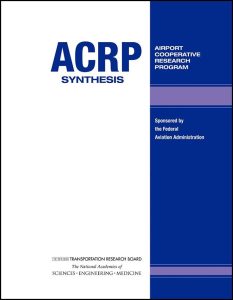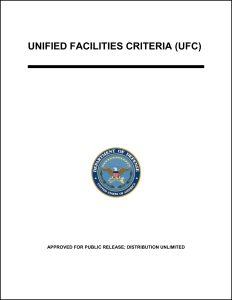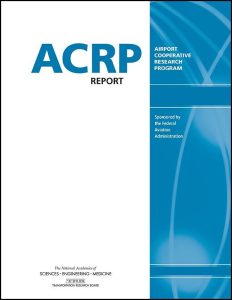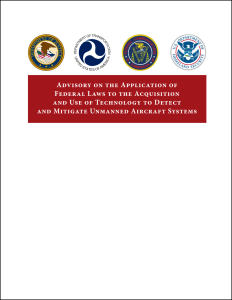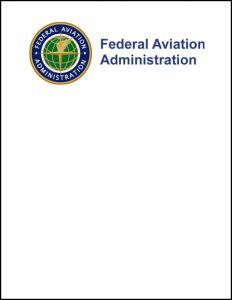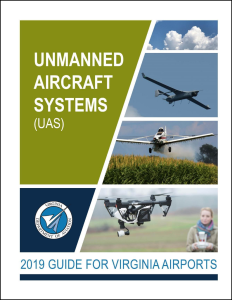To narrow the library of airside resources, use the filter boxes or airport map below or search box above.
Click an item below to expand.
Resources Matching Your Search
2019
This document is intended to be used by airport management and staff for the purpose of understanding the benefits of as well as the processes for integrating unmanned aircraft systems (UAS) into airport security programs.
2021
The popularity and affordability of unmanned aircraft systems (UAS) bring both benefits and risks. For airport operators, significant risks exist because of the low barrier to entry, limited restrictions, and few tracking and reporting mechanisms associated with UAS. While regulations are slowly catching up to technological advances, there is still a significant gap, and airports have few places to turn to for resources to prepare for UAS threats. FAA does not currently have specific guidance for responding to UAS threats. However, other federal agencies, such as the Department of Homeland Security and the Department of Justice, have developed guidance that could be useful resources for airports when updating their airport emergency plan.
2016
ACRP Synthesis 74 documents practices in safely accommodating mixed-use aeronautical activity at airports. Mixed-use aeronautical activity refers to the different categories of aircraft a public-use airport is intended to accommodate in compliance with FAA sponsor assurances. These categories include gliders, helicopters, ultralight vehicles, balloons, airships, blimps, skydiving, aerial applications for agriculture and firefighting, banner towing, aerobatic practice, and similar flight operations.
2020
This manual provides standardized airfield, heliport, and airspace criteria for the geometric layout, design, and construction of runways, helipads, taxiways, aprons, landing zones (LZs), short takeoff and vertical landing (STOVL) facilities, unmanned aircraft system (UAS) facilities, and related permanent facilities to meet sustained operations for U.S. Army, Navy, Air Force, and Marine Corps airfields.
2020
ACRP Research Report 212 provides guidelines for airports on unmanned aircraft systems (UAS) in the areas of managing UAS operations in the vicinity of an airport and engaging stakeholders, incorporating UAS into airport infrastructure and planning, and the potential use of UAS by airport operators. The introduction of UAS presented a wide range of challenges to airports and the National Airspace System. These challenges are further complicated by the dynamic and shifting nature of UAS technologies. Volume 1 provides guidelines for airport operators and managers to interact with UAS operations in the vicinity of airports. The demand for commercial UAS may increase significantly once advanced UAS operations, including beyond visual line of sight operations, operations over people, and operations of multiple UAS by one pilot are allowed through broader regulatory frameworks.
2020
ACRP Research Report 212 provides guidelines for airports on unmanned aircraft systems (UAS) in the areas of managing UAS operations in the vicinity of an airport and engaging stakeholders, incorporating UAS into airport infrastructure and planning, and the potential use of UAS by airport operators. The introduction of UAS presented a wide range of challenges to airports and the National Airspace System. These challenges are further complicated by the dynamic and shifting nature of UAS technologies. Volume 2 provides suggested planning, operational, and infrastructure guidelines to safely integrate existing and anticipated UAS operations into an airport environment. This guidebook is particularly applicable to smaller airports (non-hub and general aviation) without capacity issues. The planning approach could help these airports prepare for and attract UAS operations for additional revenue in the near term.
2020
ACRP Research Report 212 provides guidelines for airports on unmanned aircraft systems (UAS) in the areas of managing UAS operations in the vicinity of an airport and engaging stakeholders, incorporating UAS into airport infrastructure and planning, and the potential use of UAS by airport operators. The introduction of UAS presented a wide range of challenges to airports and the National Airspace System. These challenges are further complicated by the dynamic and shifting nature of UAS technologies. Volume 3 provides airports with resources to appropriately integrate UAS missions as part of their standard operations. The use of UAS by airports can result in efficiency gains, if implemented effectively. However, improper implementation will cause safety risks and damage effective airport operations.
2019
The unmanned aircraft systems (UAS) industry is on the cutting edge of aviation innovation. Airports, including tenants and contractors, are discovering the benefits of UAS to their operations and bottom line. Yet, with the diversity of UAS applications at airports, there has been a lack of relevant industry data on this topic to inform the airport industry on current practices. ACRP Synthesis 104 seeks to understand the degree of UAS use, including specific applications, by three groups: airports, airport contractors, and airport tenants. Using responses from 130 airports, one of the report's findings is that approximately 9% of participating airports are actively using UAS for airport purposes.
2021
This resource contains information on runway safety, safety management systems, drones, wildlife hazard management, and other safety topics. It provides links to resources and training courses.
2019
Blue Ribbon Task Force on UAS Mitigation at Airports was commissioned in 2019 by AUVSI and ACI-NA to address the timely and critical issue of incursions by unauthorized unmanned aircraft systems (UAS) at our nation’s airports and how best to mitigate this threat.
2020
FAA, DOJ, FCC, and DHS issued an advisory guidance document to assist non-federal public and private entities interested in using technical tools, systems, and capabilities to detect and mitigate unmanned aircraft systems (UAS). The advisory is intended to provide an overview of potentially applicable federal laws and regulations as well as some factors relevant to whether those laws may apply to particular actions or systems.
2021
This website contains guidance and educational information for unmanned aircraft system (UAS) users including recreation flyers and modeler community-based organizations, certificated remote pilots or commercial operators, public safety or government users and educational users.
2021
The rapid introduction of unmanned aircraft systems (UAS) is affecting the national airspace system and its existing stakeholders. TRB hosted a webinar that addressed the range of new safety, economic, operational, regulatory, community, environmental, and infrastructure challenges to airports that have emerged due to UAS. The presenters identified resources that airports can immediately use to avoid adverse impacts and maximize benefits. This is the first in a two-part webinar series.
2021
The rapid introduction of unmanned aircraft systems (UAS) is affecting the national airspace system and its existing stakeholders. TRB hosted a webinar that addressed FAA's integration efforts, which have direct implications for airport operators. These integration efforts include counter-UAS mechanisms, remote identification and tracking, and airspace authorization waivers. The presenters suggest specific planning, operational, and infrastructure guidelines to safely integrate existing and anticipated UAS operations into an airport environment. This is the second in a two-part webinar series.
2018
Airports are using unmanned aerial systems (UAS), also known as drones, in more varied and potentially revenue-generating ways, including foreign object debris detection, cargo delivery, terminal and perimeter inspection, and wildlife management. However, airport sponsors and their legal counsel are unclear about competing local, state, and federal regulations governing UAS operations. This webinar presented specific UAS safety, security, and privacy concerns within the context of the Small Unmanned Aircraft Regulations (14 C.F.R. Part 107).
2019
Unmanned Aircraft Systems (UAS), also known as drones, are growing at an exponential rate throughout the Commonwealth of Virginia and the world. As of 2019, FAA noted that there were more than 19,000 small UAS registered in the Commonwealth of Virginia, which creates a potential increase in conflicts between manned aircraft and UAS in the airspace. This document provides guidance on the integration of small UAS on or near public airports in the Commonwealth of Virginia.

